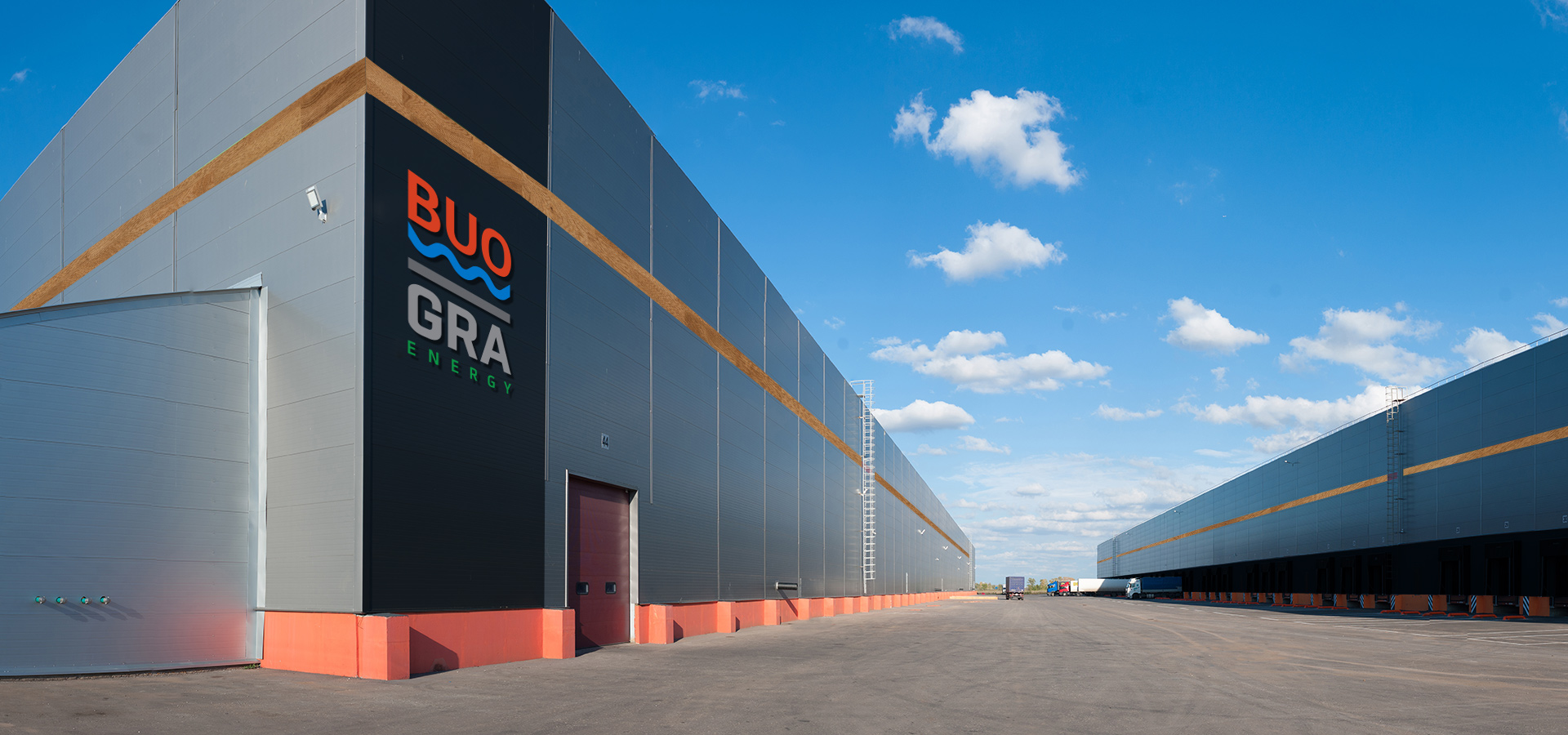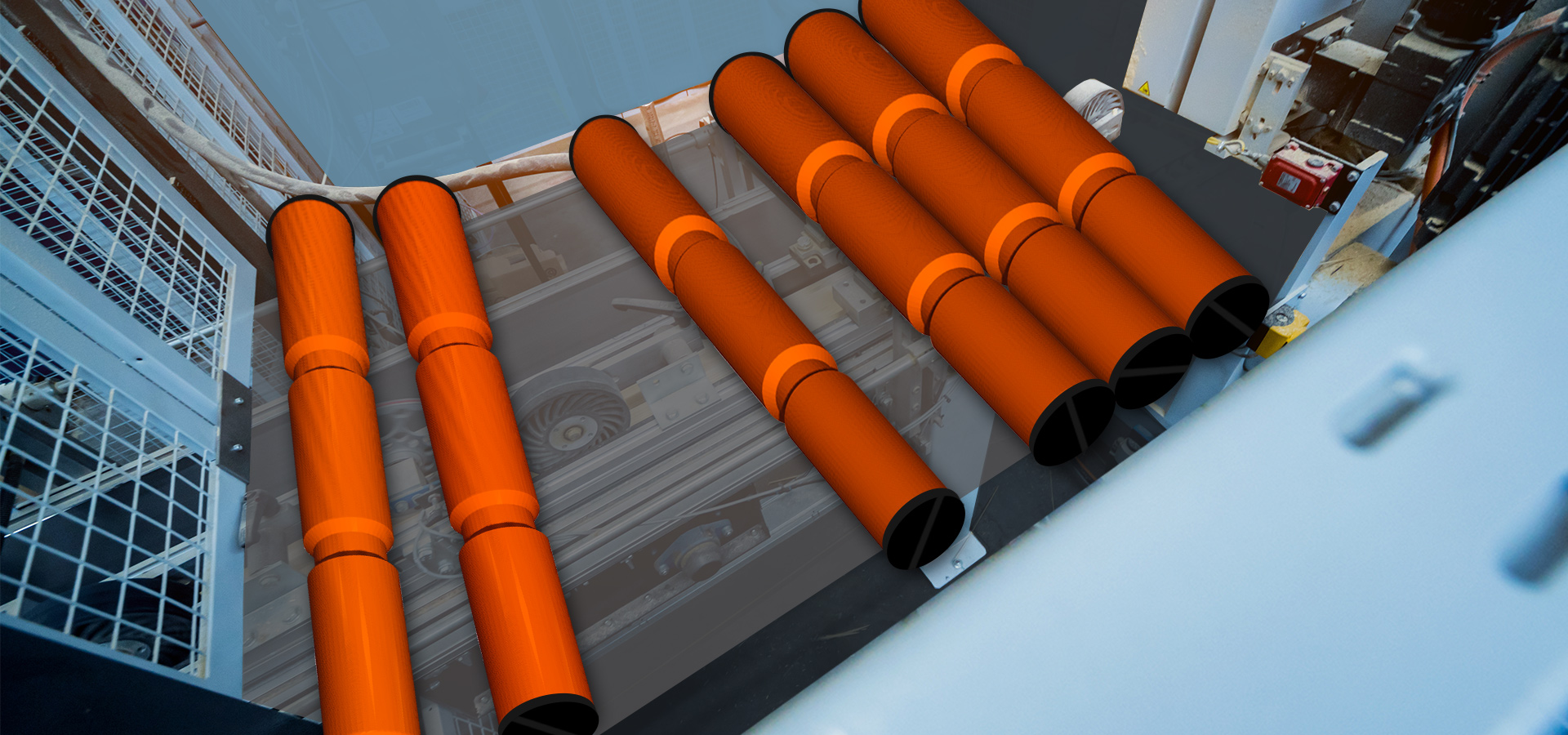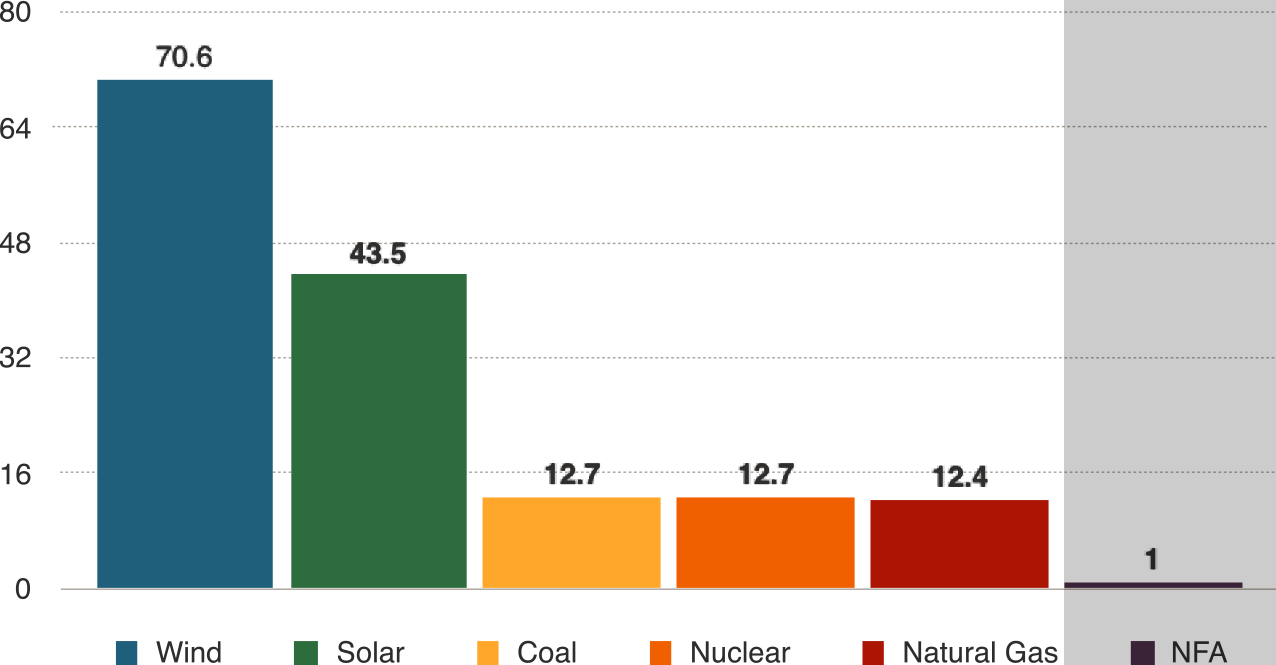BuoGra benefits from many unique advantages that allow it to be a disruptive force in the energy generation market. However, two of the most critical advantages that help position BuoGra as the superior alternative to all other renewable energy producing systems are: 1) being a fully dispatchable power source, and 2) having a very small footprint in comparison to other energy producing technologies.
Below we have illustrated how these critical advantages set BuoGra apart from its competitors and show why this technology is superior to many current forms of power generation in the market.

BuoGra power plant conceptual rendering
Dispatchable power sources are on-demand power creation source controlled by an operator. When power is needed, the controller dispatches it by turning on the generation. Examples of dispatchable power sources are coal, natural gas, nuclear, and BuoGra. However, all the aforementioned contribute to air pollution, hazardous waste and climate change, where BuoGra is set to reduce all.
Non-dispatchable power sources are intermittent sources that depend on the presence and strength of resources and cannot be controlled on demand. Examples of non-dispatchable power sources are wind and solar. Non-dispatchable technologies are not readily available systems. They do not make the same contribution to the power grid, serving as complementary power sources to dispatchable technologies. On the other hand, BuoGra, as a dispatchable power source, is a stand-alone system that can meet the demands of the end-user, especially during peak loads.

In a comprehensive study “The Footprint of Energy: Land Use of U.S. Electricity Production” by the STRATA group at Utah State University in June 2017, the researchers compared the direct and indirect land use for electricity generation in the United States in 2015 for different energy sources. The study considered the land used during resource production, for the energy plants, for transport and transmission, and for storage of waste materials. Both one-time and continual land-use requirements were compared.
According to this in-depth study, coal, natural gas, and nuclear power all feature the smallest physical footprint of about 12 acres per MW of electricity produced. However, those energy producers contribute the most to pollution and climate change. Solar and wind-powered energy generation is more land-intensive, using between 43.5 to 70.6 acres per MW of electricity generated. Hydroelectric energy generation uses a significantly larger footprint than any other technology, about 315.2 acres per MW of electricity, mainly due to the large dams needed.

This graph illustrates a comparison of the land use of various energy sources, using data from the Strata study. Each bar column represents the number of acres needed to produce 1 MW of electricity by the various power generation technologies. The hydroelectric energy source has been excluded from this graph since its land use of 315 acres of land to produce 1 MW of electricity is significantly more than the other producers.
BuoGra has the potential to use the least land area. Twenty two BuoGra systems can produce an estimated 1,320 MW of electricity within an acre of land. This finding puts BuoGra at the top of the list in terms of power generation ROI. Not only can it easily be implemented anywhere within the urban areas but also requires such a small footprint that will not interfere with zoning and urban planning endeavors.
Even with these advantages BuoGra is going to face market penetration challenges and massive resistance from other power generation entities. This is where our partners and supporters come in. If you are interested in supporting this disruptive technology now is the time to get involved and make your mark on the future health of our planet.
BuoGra is mother natures’ technology, which powers the planets green valleys. We are actively searching for strong partners and sponsors to help BuoGra become the future of green energy generation. Click below to learn how you can support BuoGra R&D.

Learn how you can Sponsor BuoGra's Research and Development.

Find out how you can Partner with Us to support BuoGra R&D.

Still have more questions? Contact us today to learn more about BuoGra.